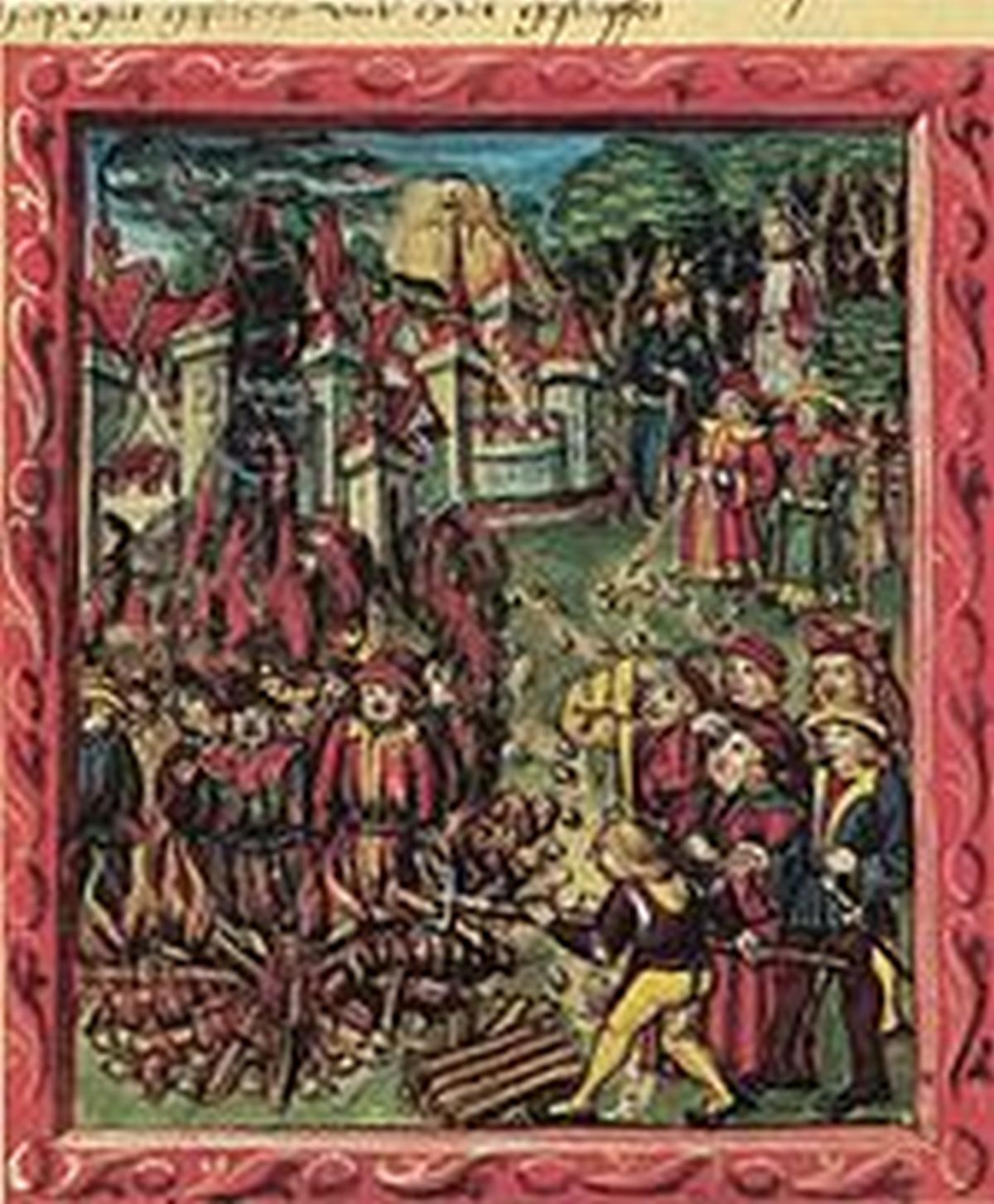“I can’t wait to tell my buddies in shul about this one,” said the team leader.
 Köln, Germany, February 26 – Archaeologists exploring the ruins of an eleventh-century synagogue have come upon a man still engaged in conversation with the man sitting next to him during services, an article in the journal Archaeology Today reports.
Köln, Germany, February 26 – Archaeologists exploring the ruins of an eleventh-century synagogue have come upon a man still engaged in conversation with the man sitting next to him during services, an article in the journal Archaeology Today reports.
The archaeologists report that the man, Baruch ben Meir, is apparently so deeply engrossed in talk with the fellow beside him in the pew that he never noticed that Saturday morning Sabbath services had ended, or that he has been dead for a thousand years. His oblivion to the goings-on around him evidently extends to not being aware that the local Jewish community, including the synagogue, was destroyed multiple times over the ensuing centuries.
Köln, an ancient city on the Rhine, has the oldest documented presence of Jews north of the Alps. Massacres and expulsion hit the Jews of Köln through the Middle Ages, apparently going completely over the head of ben Meir, who was too focused on developments in local sports to notice. Despite the near-erasure of the community through expulsion in the fifteenth century, the cobbler by trade continued talking about the latest in Rhineland shoe fashion for fall 1028, and how many thalers he expected his wife and daughters to spend on clothes for the High Holidays.
So rapt was ben Meir’s focus that he apparently failed to notice that his interlocutor had departed after the conclusion of services.
Sketchy testimony from the thirteenth century refers to a man who could not be stopped from talking during most of the services and Torah reading. The tradition, preserved in notes to a liturgical poem, describes how the man would not react to stimuli not related to the subject of his conversation. Later generations evidently dropped the poem from the liturgy, as it is not preserved in the collections of Ashkenazi prayers recorded in manuscripts after approximately the year 1200.
Massacres in Eastern Europe during the uprisings of Ukrainian leader Bogdan Chmielnicki, which may have claimed hundreds thousands of Jewish lives, prompted a number of prominent Rabbis to blame people’s penchant for idle chatter in the synagogue for precipitating the carnage. A prayer that appears in several modern prayer books and still recited by a handful of congregations, asks God to bestow blessings on those who refrain from chattering during services. A single, early manuscript of the prayer, attributed to Rabbi Yom Tov Lippmann Heller of the seventeenth century, contains marginalia that cite the legend of the Köln talker and the earlier poem, which otherwise go unmentioned.
The archaeologists voiced excitement at their findings. “I can’t wait to tell my buddies in shul about this one,” said the team leader.
Please support our work through Patreon.




